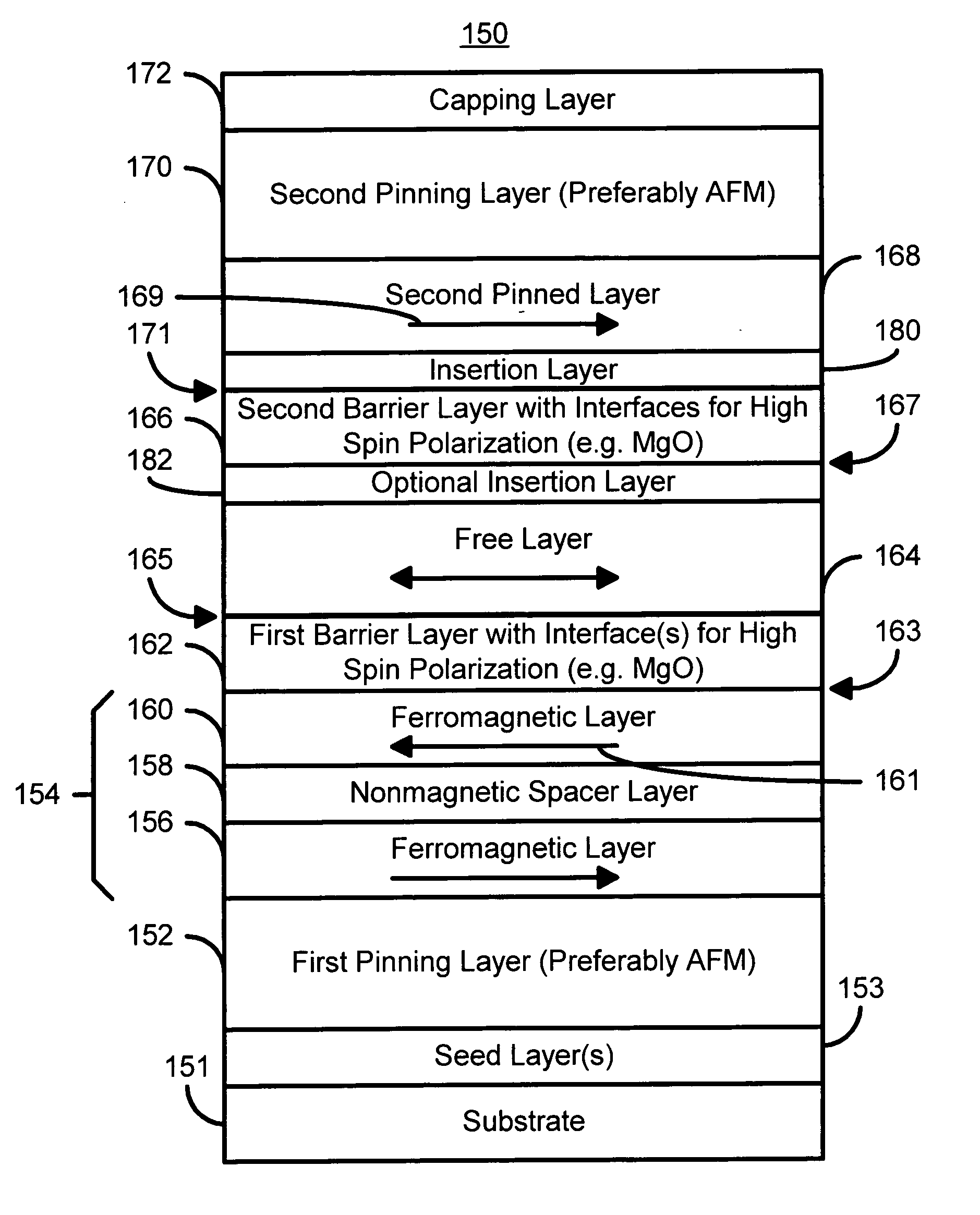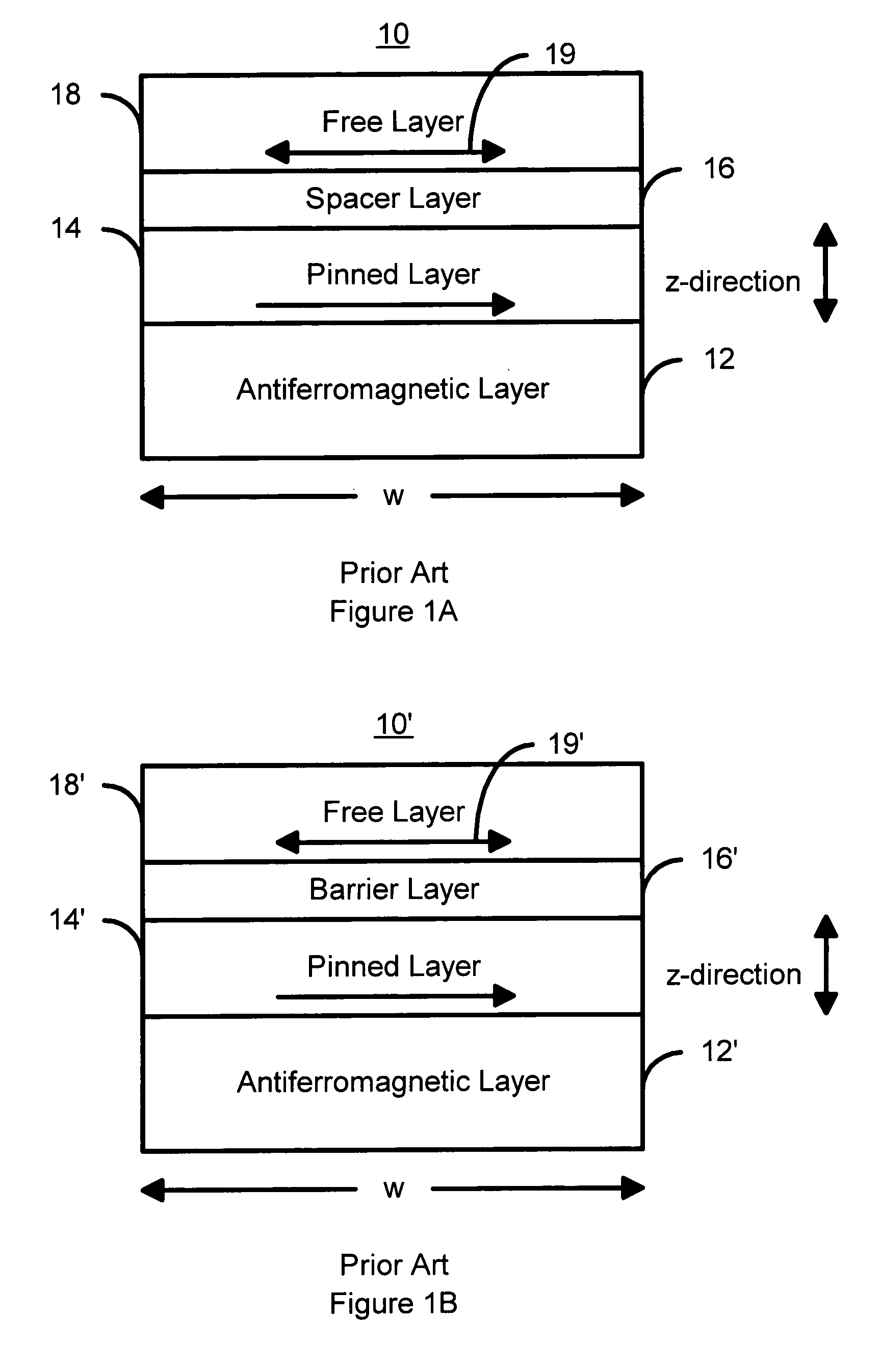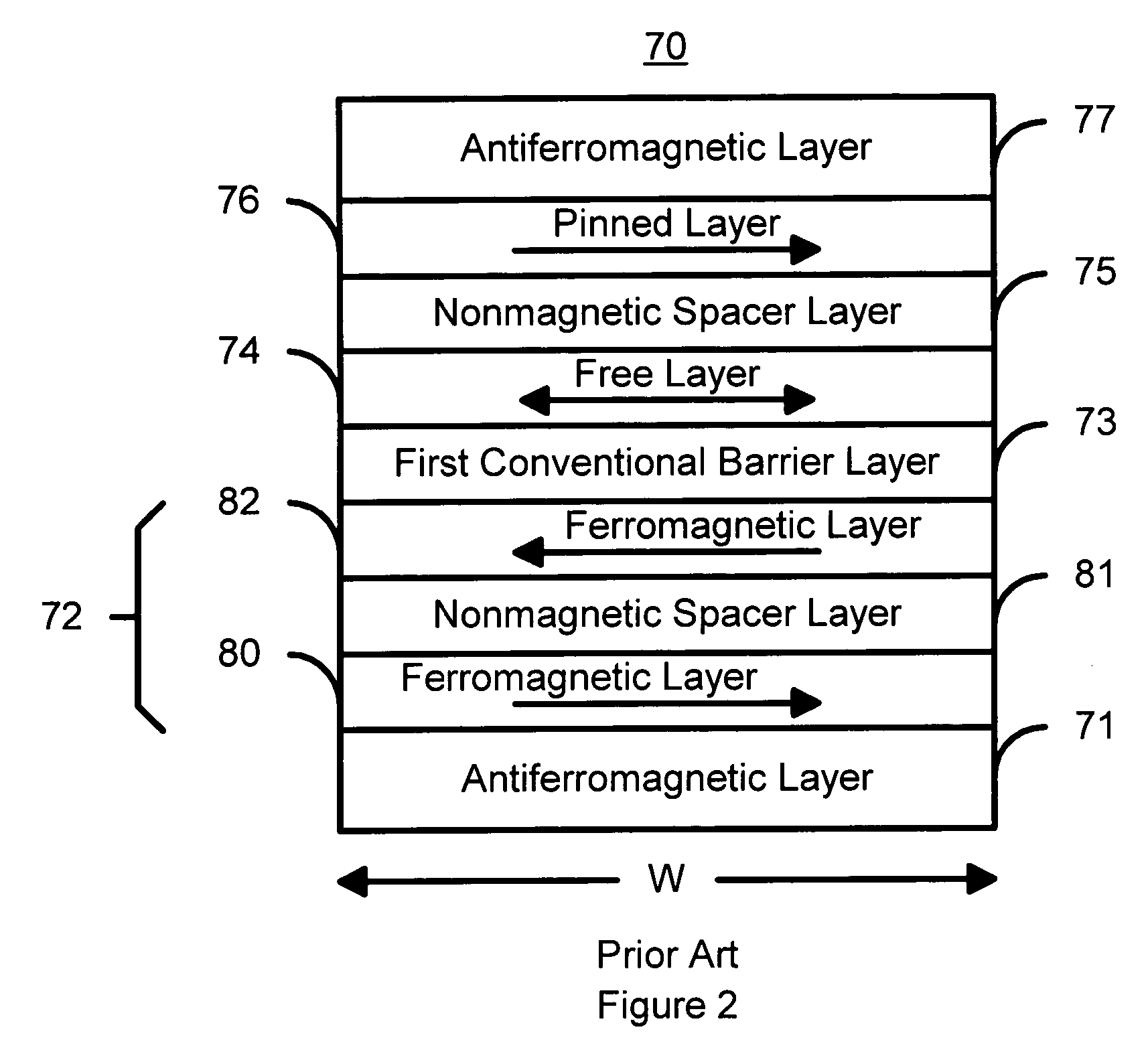MTJ elements with high spin polarization layers configured for spin-transfer switching and spintronics devices using the magnetic elements
a technology of high spin polarization layer and magnetic element, which is applied in the manufacture of inductance/transformer/magnet, magnetic body, instruments, etc., can solve the problems of affecting the utility and reliability of such conventional magnetic elements, increasing power consumption, and conventional magnetic elements b>10/b>, and achieves the effect of low write curren
- Summary
- Abstract
- Description
- Claims
- Application Information
AI Technical Summary
Benefits of technology
Problems solved by technology
Method used
Image
Examples
first embodiment
[0031]FIG. 3 is a diagram of a magnetic element 100 in accordance with the present invention and which can be written using spin transfer. The magnetic element 100 includes a first pinning layer 102 that is preferably an AFM layer, first pinned layer 104, a first barrier layer 112, a free layer 114, a second barrier layer 116, a second pinned layer 118, and a second pinning layer 120. Also depicted are capping layer(s) 122. In an alternate embodiment, the first pinning layer 102 and / or the second pinning layer 120 may be omitted in favor of another mechanism for pinning the magnetizations of the pinned layers 104 and 118. In a preferred embodiment, the AFM layers 102 and 120 include materials such as PtMn and IrMn. In addition, seed layers 103 may be used on the substrate 101 to provide a desired texture of the AFM layer 102. Any ferromagnetic layers, such as the free layer 114, first pinned layer 104 (or ferromagnetic layers 106 and 110), and the second pinned layer 118 include at ...
second embodiment
[0041]FIG. 5 is a diagram of a magnetic element 150 in accordance with the present invention and which can be written using spin transfer. The magnetic element 150 includes a first pinning layer 152 that is preferably an AFM layer, first pinned layer 154, a first barrier layer 162, a free layer 164, a second barrier layer 166, a second pinned layer 168, and a second pinning layer 170. Also depicted are capping layer(s) 172. In an alternate embodiment, the first pinning layer 152 and / or the second pinning layer 170 may be omitted in favor of another mechanism for pinning the magnetizations of the pinned layers 154 and 168. In a preferred embodiment, the AFM layers 152 and 170 include materials such as PtMn and IrMn. In addition, seed layers 153 may be used on the substrate 151 to provide a desired texture of the AFM layer 152. Any ferromagnetic layers, such as the free layer 164, first pinned layer 154 (or ferromagnetic layers 156 and 160), and the second pinned layer 168 include at ...
third embodiment
[0051]FIG. 8 is a diagram of a magnetic element 200 in accordance with the present invention and which can be written using spin transfer. The magnetic element 200 includes a pinning layer 202 that is preferably an AFM layer, pinned layer 204, a barrier layer 212, and a free layer 214. Also depicted are capping layer(s) 216. In an alternate embodiment, the pinning layer 202 may be omitted in favor of another mechanism for pinning the magnetizations of the pinned layer 204. In a preferred embodiment, the AFM layer 202 includes materials such as PtMn and IrMn. In addition, seed layers 203 may be used on the substrate 201 to provide a desired texture of the AFM layer 202. Any ferromagnetic layers, such as the free layer 214 and pinned layer 204 (or ferromagnetic layers 206 and 210) include at least one of Ni, Co, and Fe. For example, such materials include but are not limited to CoFe, CoFe, Ni, CoFeB (with B being at least five and no more than thirty atomic percent), CoFeC, and CoFeHf...
PUM
 Login to View More
Login to View More Abstract
Description
Claims
Application Information
 Login to View More
Login to View More - R&D
- Intellectual Property
- Life Sciences
- Materials
- Tech Scout
- Unparalleled Data Quality
- Higher Quality Content
- 60% Fewer Hallucinations
Browse by: Latest US Patents, China's latest patents, Technical Efficacy Thesaurus, Application Domain, Technology Topic, Popular Technical Reports.
© 2025 PatSnap. All rights reserved.Legal|Privacy policy|Modern Slavery Act Transparency Statement|Sitemap|About US| Contact US: help@patsnap.com



